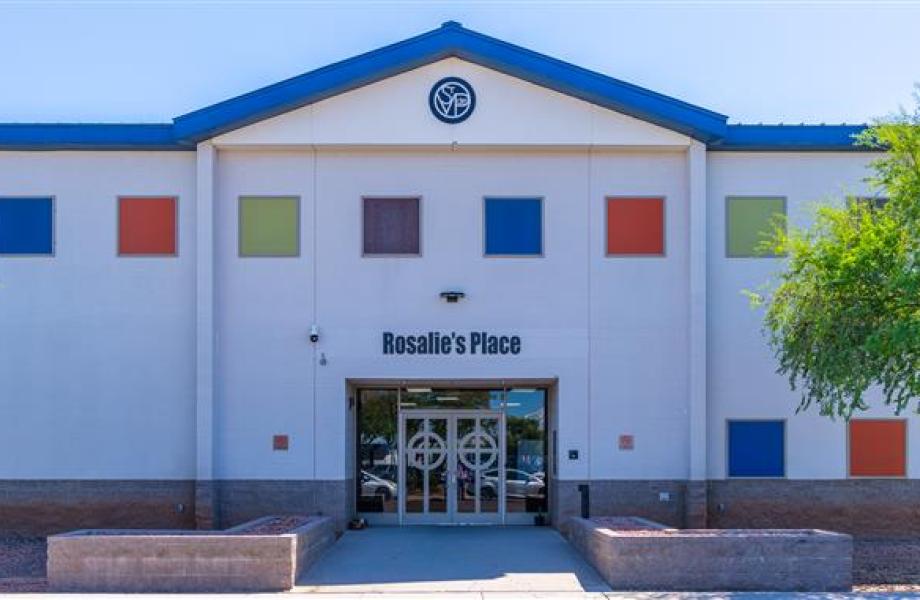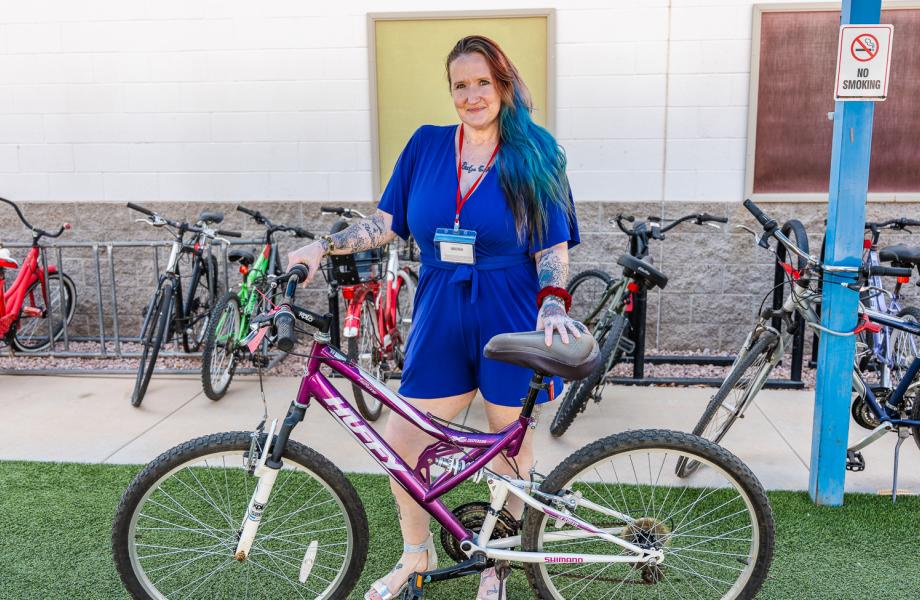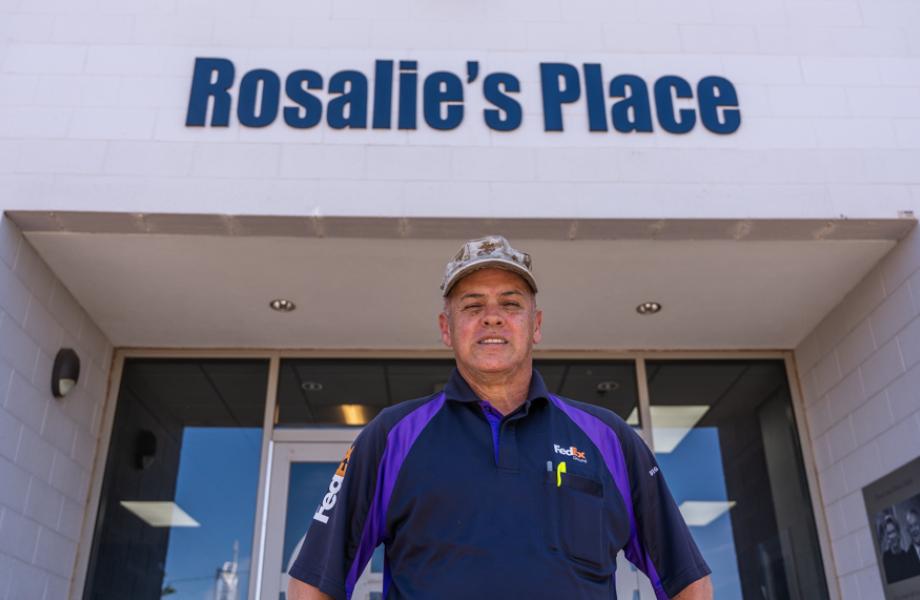A Bed Today, A Home Tomorrow
James Davis used to wake up in abandoned buildings. They were the closest thing to shelter in the many months that he experienced homelessness before landing at St. Vincent de Paul’s new shelter on Washington and 28th streets.
James experienced homelessness off and on for several years. Despite the challenges, he worked hard at making something of himself. He would spend his days on the street, figuring out where to get food or maybe some cigarettes, one of his few comforts at the time.
During his first bout of homelessness, he worked his way into an apartment by taking classes to become licensed in peer support. He lost his job when management had a round of layoffs.
Later, he qualified for Section 8 housing that helped him secure an apartment for a year, but at the end of his lease, the complex raised rent by $500 per month. He couldn’t afford the increase, nor could he find a place on short notice within his budget.
James was back on the streets only 30 days later.

THE FORCES DRIVING INCREASED HOMELESSNESS
Housing struggles like this aren’t unique to James. Phoenix’s median rent has increased to $2,350 across the Valley, a jump of 46 percent, in the last year alone.
Rent increases are reason enough to cause a housing crisis in someone’s life, but combined with the pre-existing lack of affordable housing, an economy battered by the pandemic, high rates of debt from pandemic unemployment and increasing costs of daily living, a perfect storm formed to create a homelessness surge.
The lifting of the federal eviction moratorium in 2021 initiated the downpour.
At the start of 2022, there were more than 9,000 people experiencing homelessness in Maricopa County, 5,000 of whom were unsheltered and living in places not meant for habitation. That number is double from what it was in 2018. That’s 100% growth in four years.
In the downtown area around the Human Services Campus (HSC), there were approximately 500 people living unsheltered in January. By May, it had exploded to over 1,000 just as temperatures broke into triple digits.
For people experiencing homelessness in Phoenix, it takes everything just to survive the harsh summers. In 2021, there were 339 heat-related deaths in Maricopa County, and in 2022, the county set a half-year record for heat-related deaths.
With summer bearing down on the Valley, establishing additional shelter became more critical. That’s where St. Vincent de Paul stepped up to join in a community solution.
A NEW NEIGHBORHOOD SHELTER IN THE VALLEY
Together with the City of Phoenix, Maricopa County, Community Bridges, Inc. and From the Ground Up, SVdP opened a new neighborhood shelter and housing program on the corners of Washington and 28th streets that sleeps a total of 200 men and women.
The shelter prioritizes alleviating homelessness in its direct neighborhood first, then targets downtown around the HSC. It has an intense focus on serving as a guided path, not only to housing, but to rediscovering stability and productivity as an engaged citizen of the community. The City and County together provided $4 million to initially fund the operations, with the City continuing support to keep the shelter open through 2024.
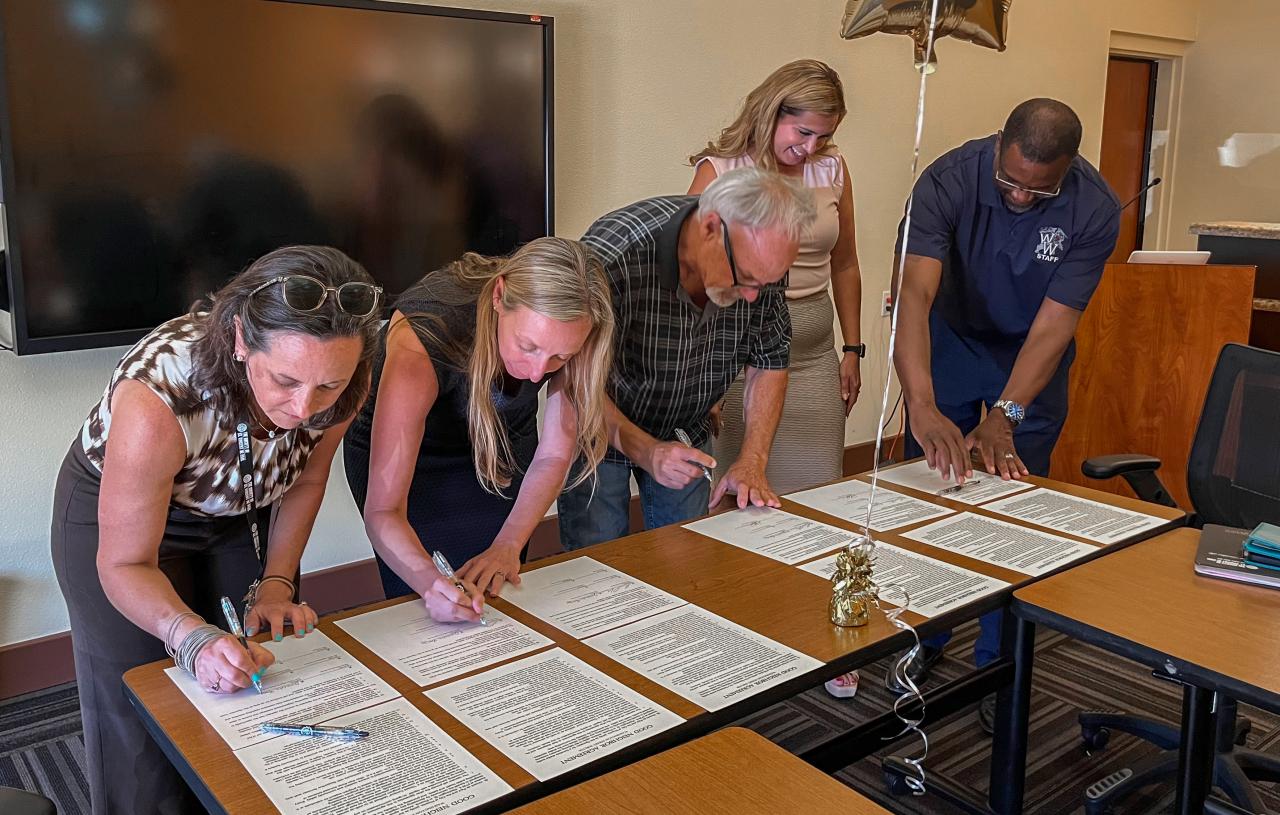
“It’s a great privilege and responsibility to be one of the lead partners on this pilot program,” SVdP Chief Program Officer Jessica Berg says. “We like to think that City and County chose SVdP for not only our proven track record of running a successful shelter, but also for our culture of dignified service, kindness and working collaboratively with our neighbors.”
"The idea of having a closed campus is really different in that people have the same bed and space every night, and so they get to feel a sense of stability and safety. They know where they’re sleeping."
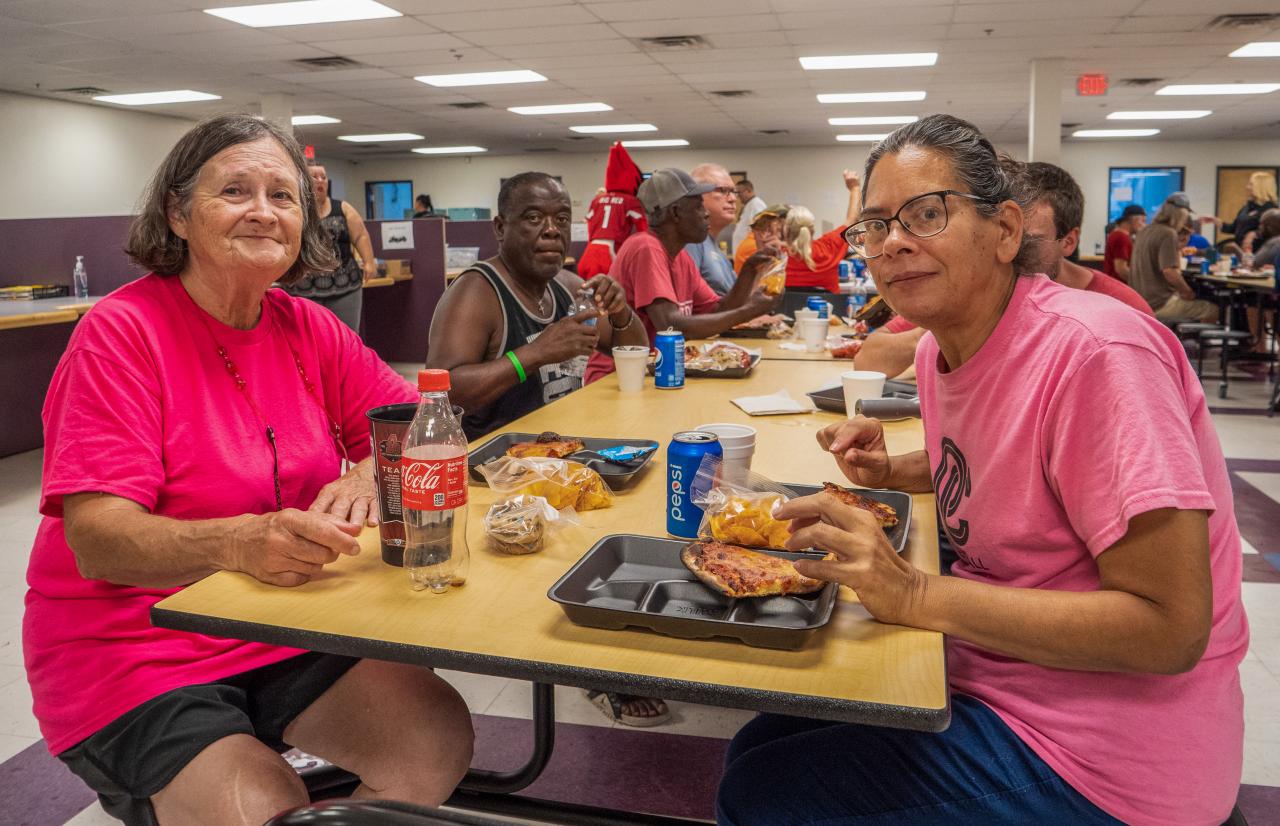
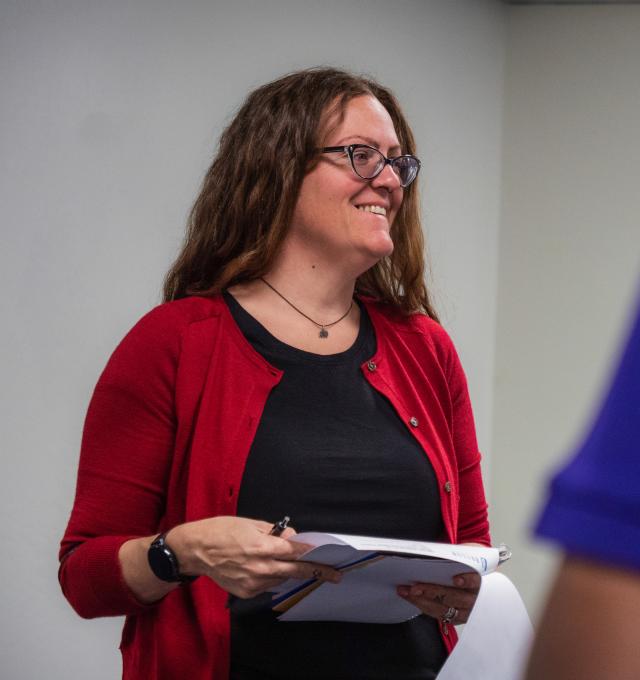
The model is envisioned to be THE example for future neighborhood shelters across the Valley, helping to decentralize homelessness services and prove that such a shelter can help (not hinder) neighborhoods. What makes this model different is its 24/7 operation and wraparound services all located on site.
Unlike traditional shelters, the Washington St. shelter is not an overnight stop where guests leave in the morning and return in the evening, hoping to get a bed again — and often don’t.
At the Washington St. shelter, guests have a dedicated bed just for them. They can stay in the shelter all day to access its services, like showers, laundry, fresh clothing, hygiene items, case management, workforce and volunteer opportunities, and support to overcome substance abuse or mental health obstacles. SVdP also provides three hot meals a day. However, many residents leave to go to work or apartment hunt, if that’s a possibility.
“The idea of having a closed campus is really different in that people have the same bed and space every night, and so they get to feel a sense of stability and safety. They know where they’re sleeping,” Jessica says.
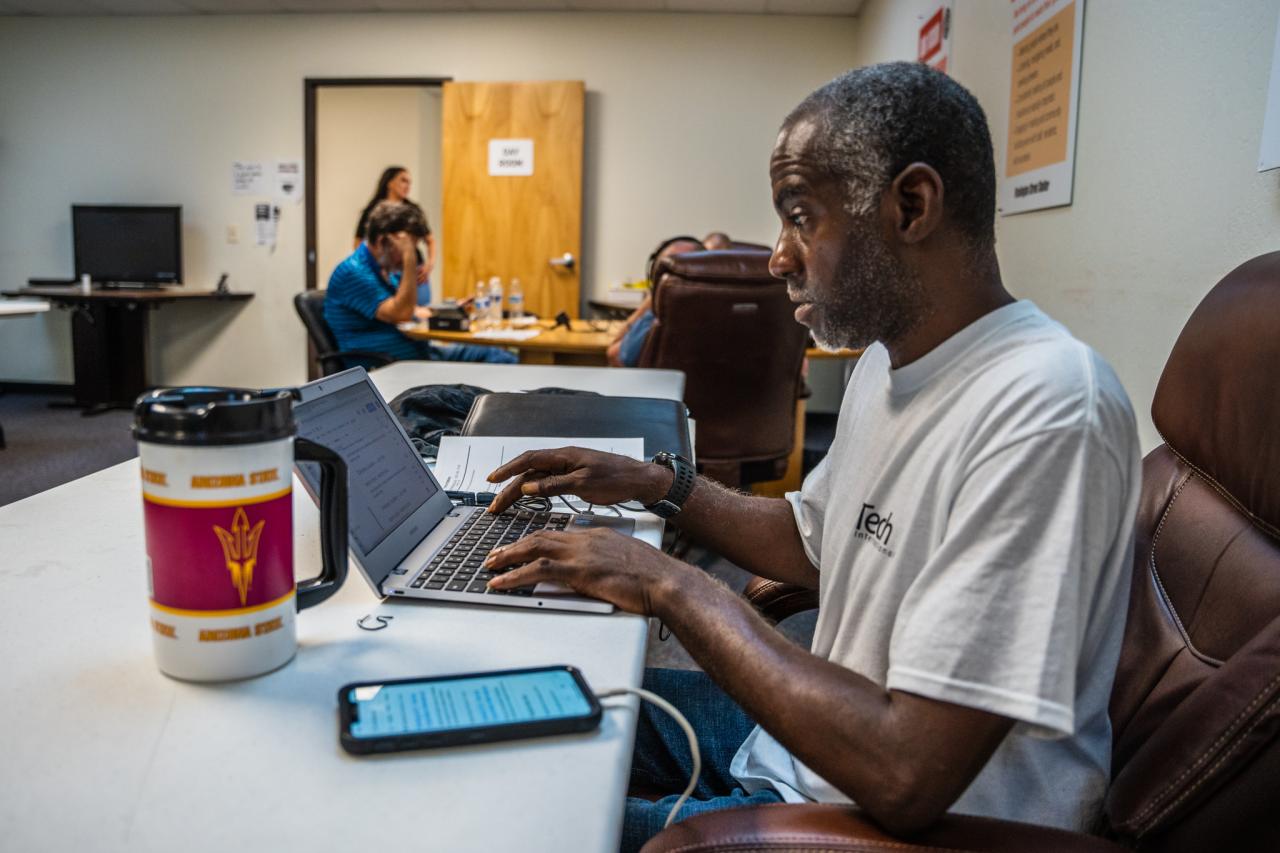
That’s the key to the shelter — coupling stability with workforce and volunteer opportunities so that people can get back on their feet and focus on more than just survival. There is a staff of case managers, many of whom worked to get off the streets themselves.
“We have faced the hopelessness of trying to figure out how to change your life, and we want to bring hope to the people who come here,” SVdP Shelter Program Manager Jennifer Morgan says. They help each resident overcome unique obstacles. For some, that’s reconnecting with family. For others, they tackle health care needs or help sort out finances, work, and housing options.
"We have to think about this program like a pipeline to housing. So while we may have only 200 beds at a time, as each person transitions to housing, a spot opens to invite a new resident to start their journey toward stability and home."
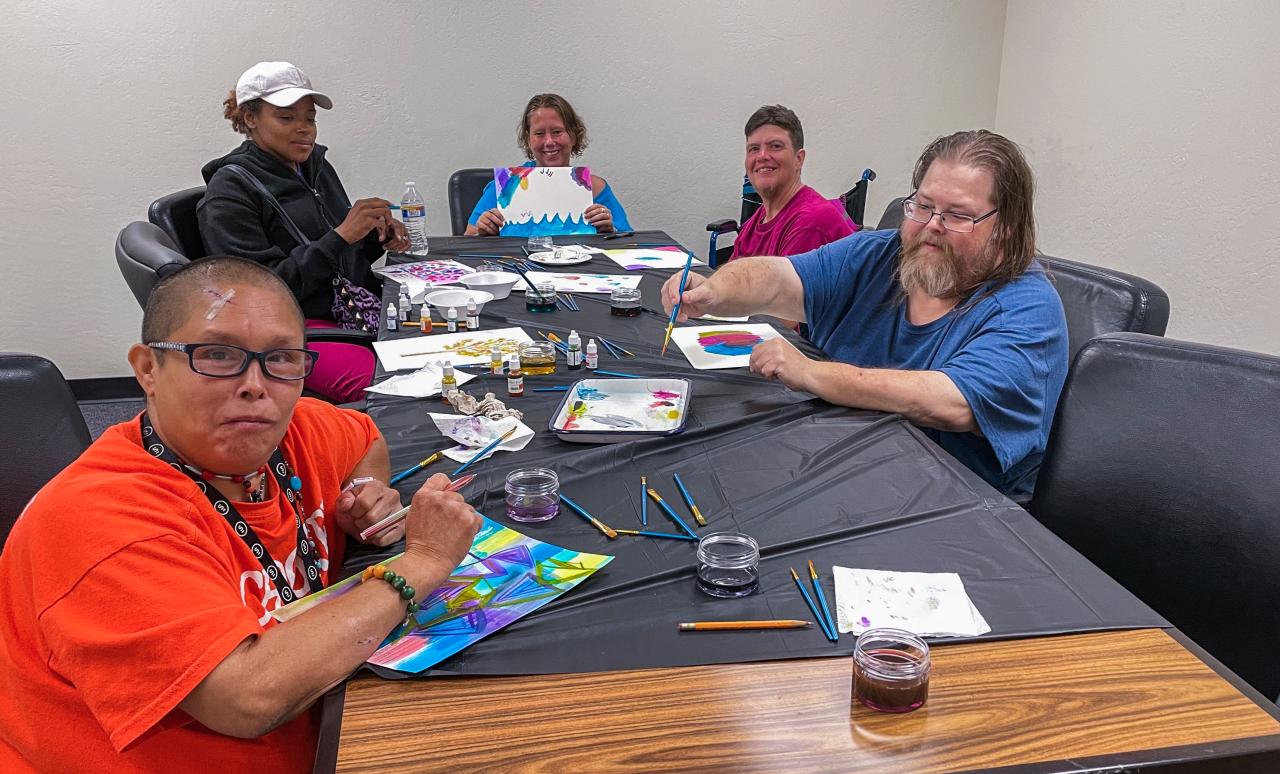
“We have to think about this program like a pipeline to housing,” Jennifer says. “So while we may have only 200 beds at a time, as each person transitions to housing, a spot opens to invite a new resident to start their journey toward stability and home.”
That’s the main goal of the shelter — to end homelessness one person at a time.
ENDING HOMELESSNESS ONE PERSON AT A TIME
After a partner agency connected James to SVdP’s Washington St. shelter, James went from having no place to put his head to having his own bed and a secure locker for his possessions overnight.
At night, he could lie in his cot (fitted with his sheets and his blanket) and feel safe and secure. Waking up, he could go out of the sleeping area and eat a freshly prepared breakfast. If he wasn’t hungry, he could take a shower. And after that, chat with friends or shelter staff, who he says treats residents with the utmost respect. James was especially impressed with his interactions with the shelter’s manager.
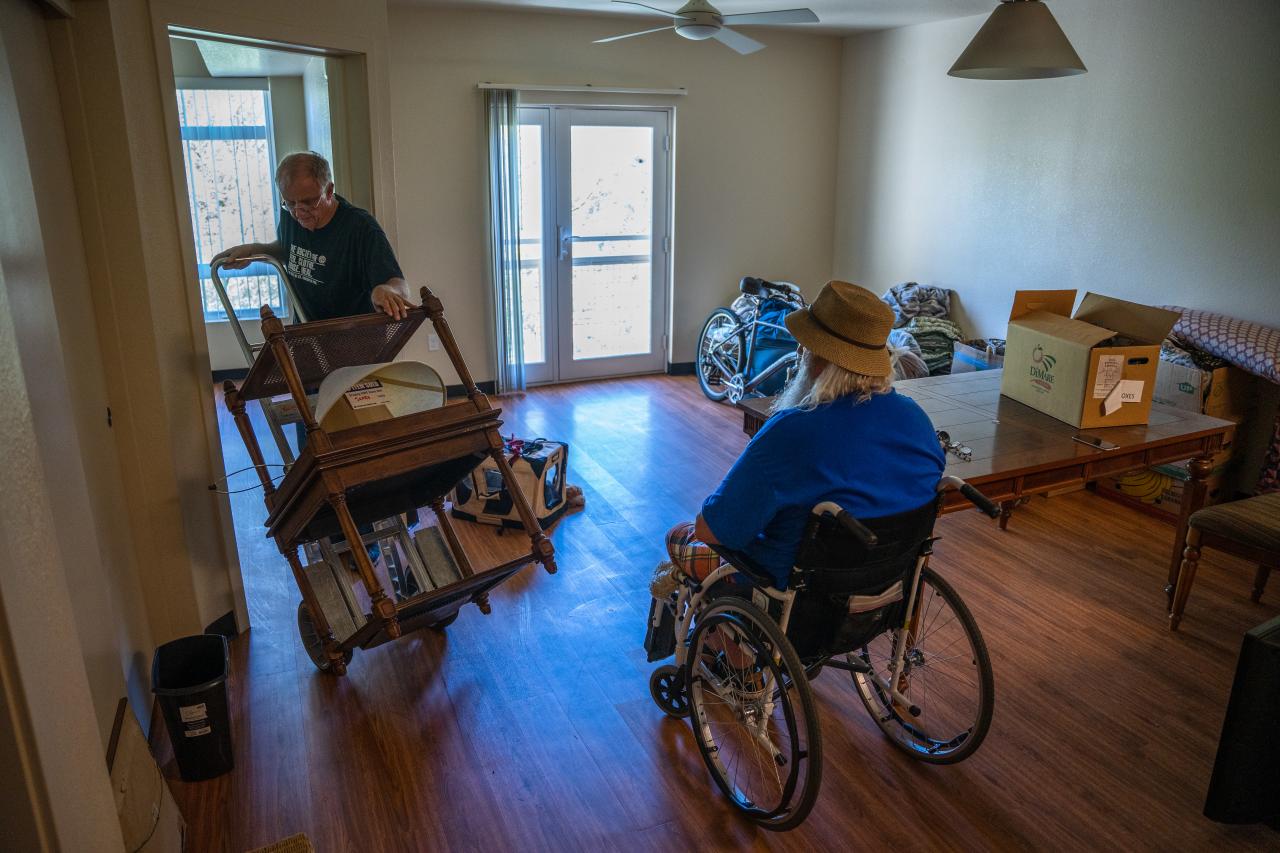
“She would have me in her office and talk to me, just like I’m her best friend,” he says. “If you wanted to talk to Jennifer, you could walk into her office at any time, as long as she’s there, and she will sit down and talk to you.”
And of course, he loved the food.
In the dining room are also the caseworkers’ desks, where James often convened with his own caseworker, who helped him access his social security money and find affordable housing. He spent about two months in the shelter when a leasing agreement for an apartment was approved, and he was able to move into his place.
James isn’t an isolated case either. Since May 2022, the shelter has served 779 residents, and 440 people had positive housing exits, with 79 moving into permanent housing.
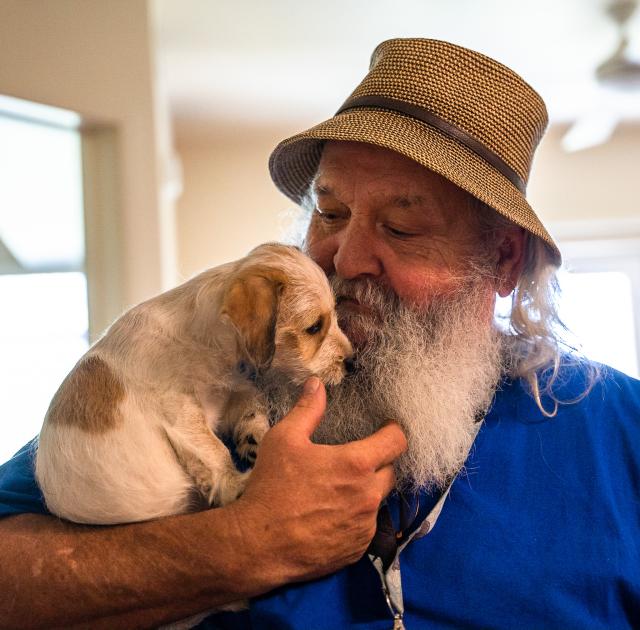
And each one of those days, residents didn't worry about where their next meal would come from, where they would spend the night, if the heat would be too much, or if their few possessions might be stolen.
Before James moved into his apartment, he qualified for a special rehousing program at SVdP called Bringing Hope Home, where SVdP’s thrift store and truck teams set up newly housed individuals with furniture and other household essentials for their new home. James picked out a new bed, a new couch, and much more.
With the team’s help, he moved into his new
apartment in August with his puppy, Miracle, that he adopted while staying at the shelter.
“It was like I died and went to heaven,” James says of his first night home.
After everyone left, he and his puppy cuddled up on the couch. He watched YouTube videos on his phone, feeling Miracle’s breath on his chest, before falling asleep in the soft peace of his new home.

